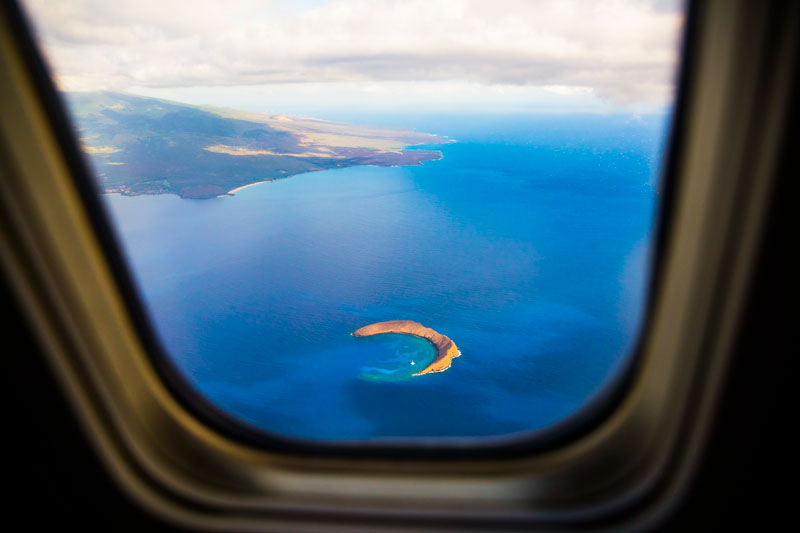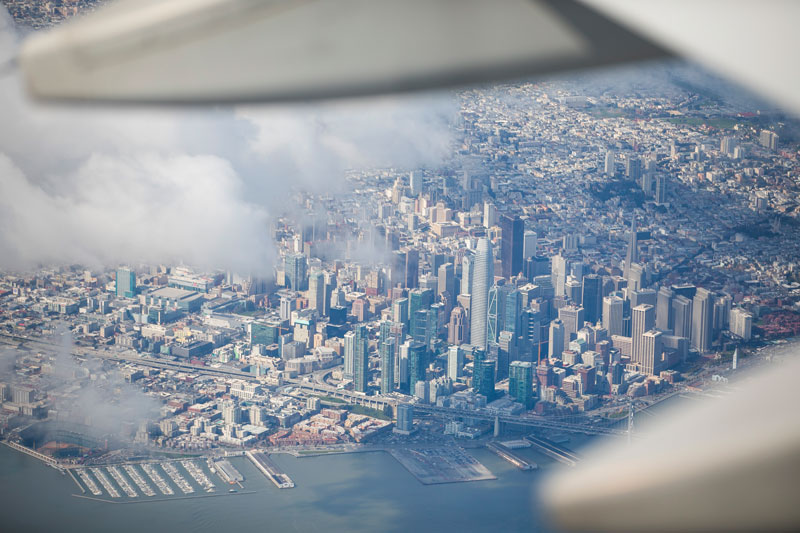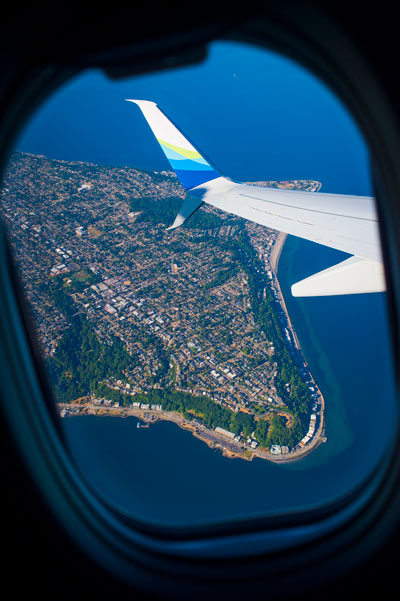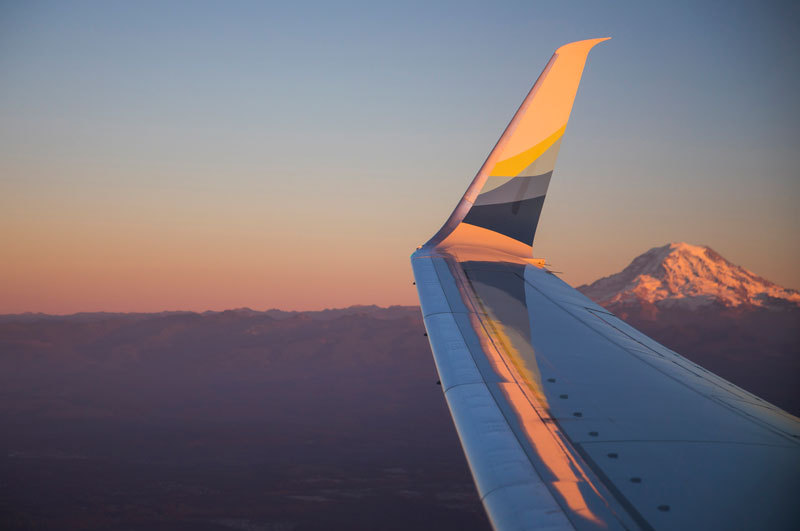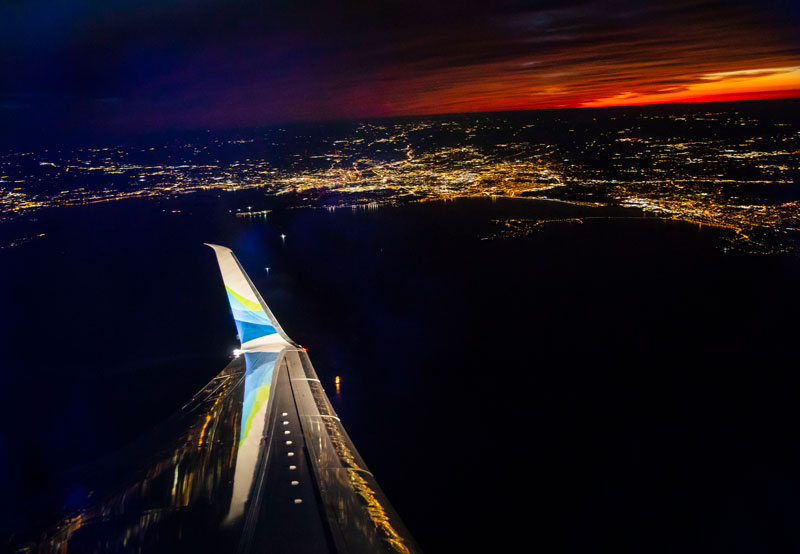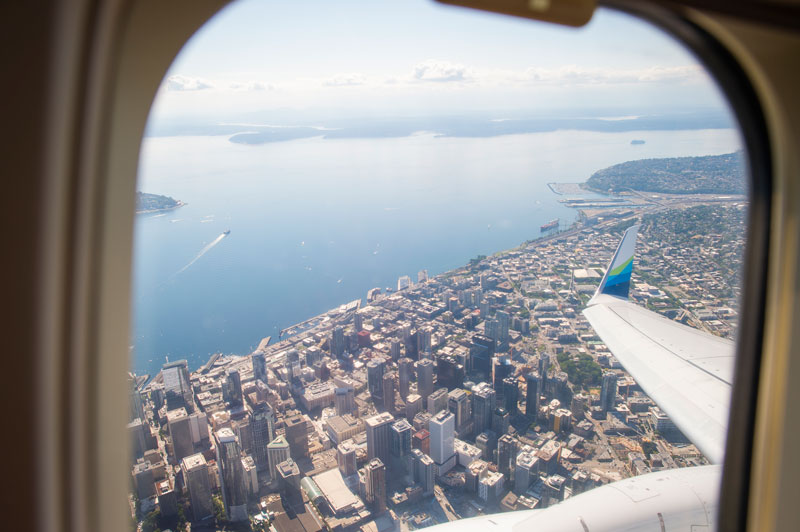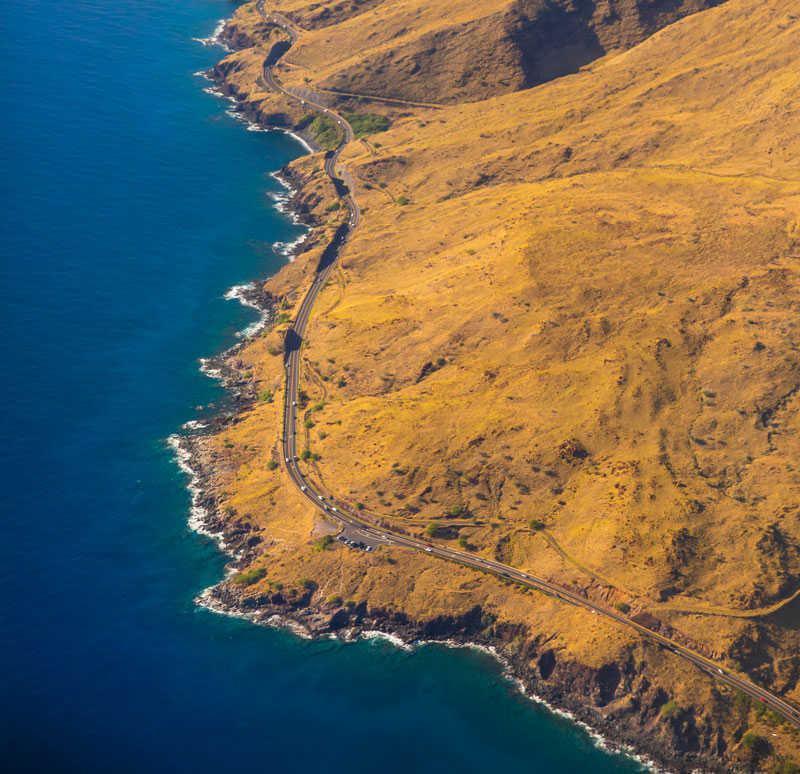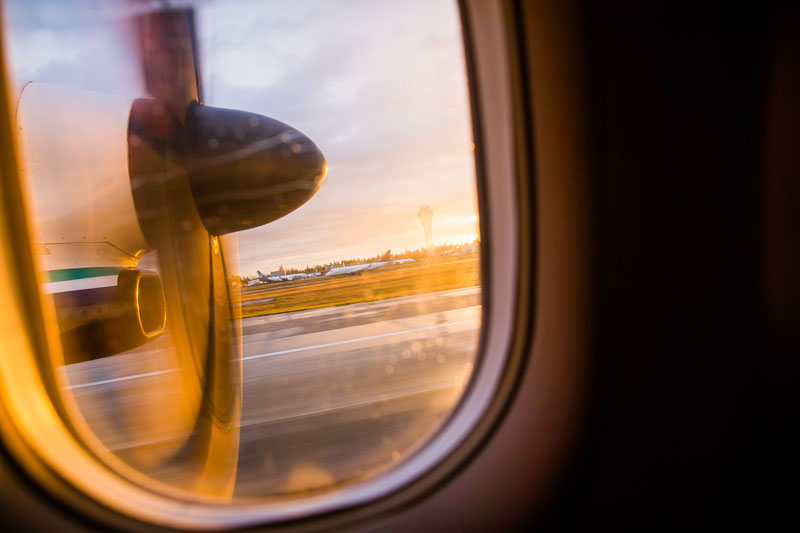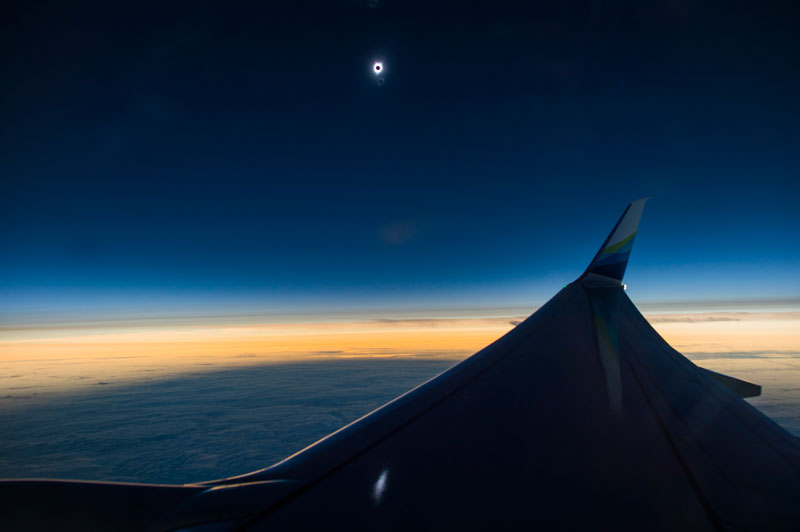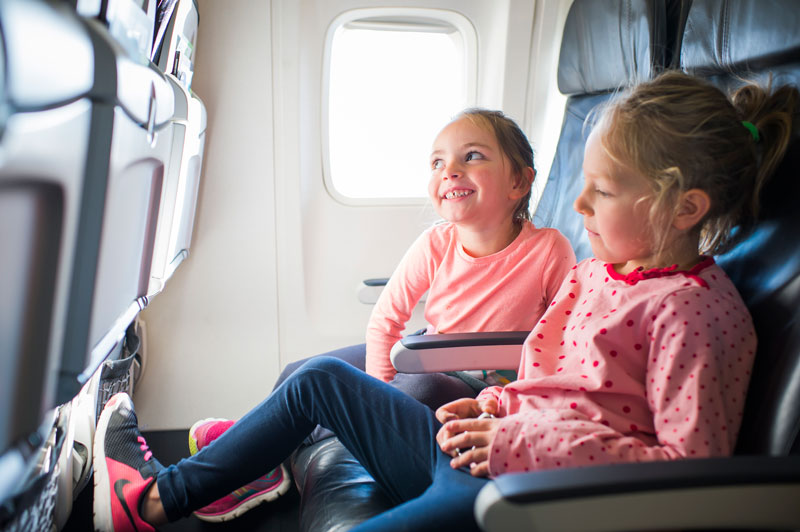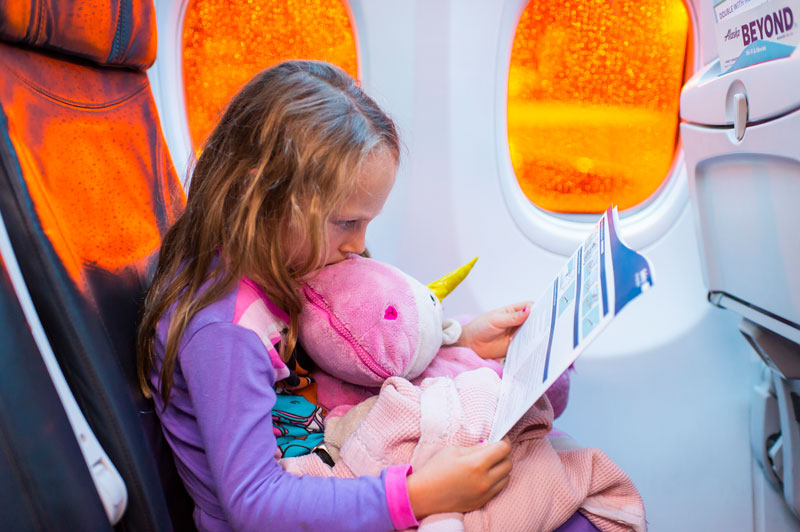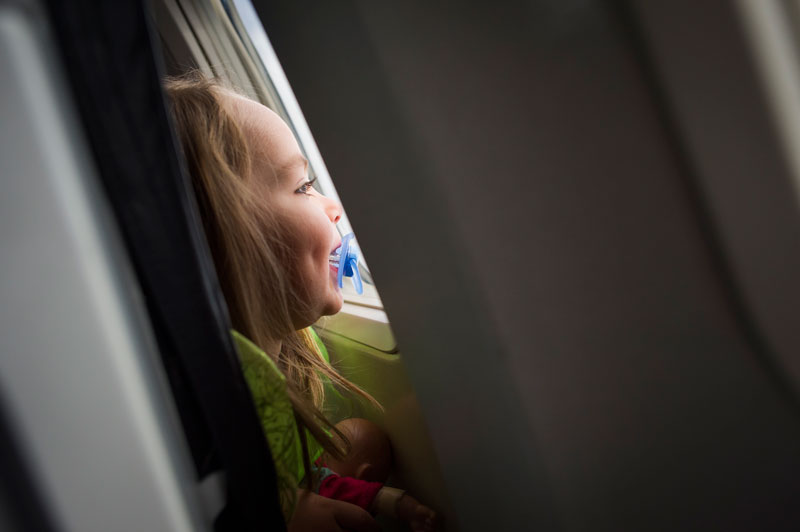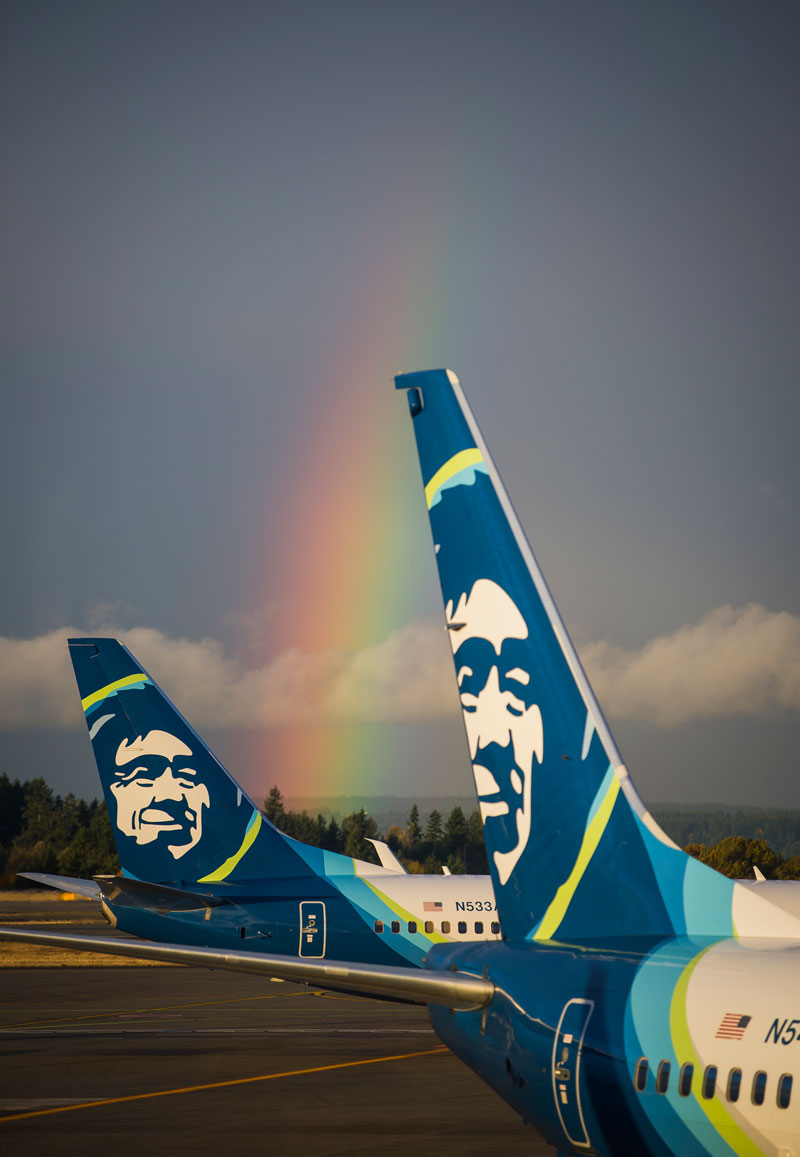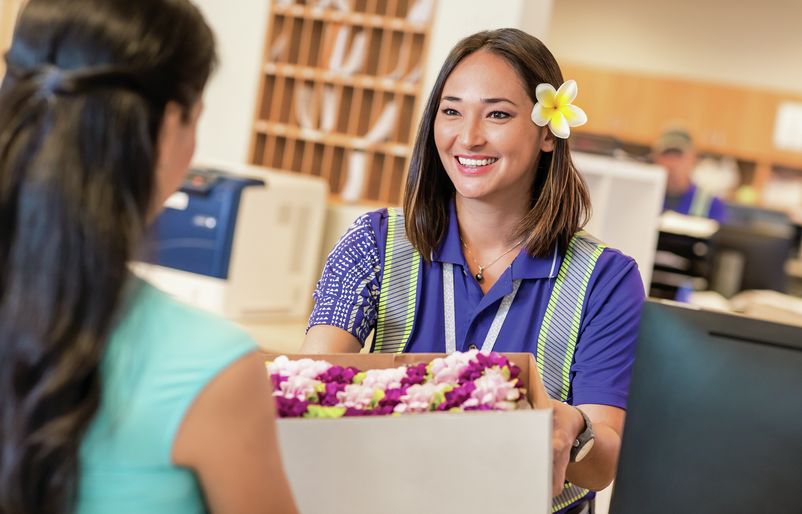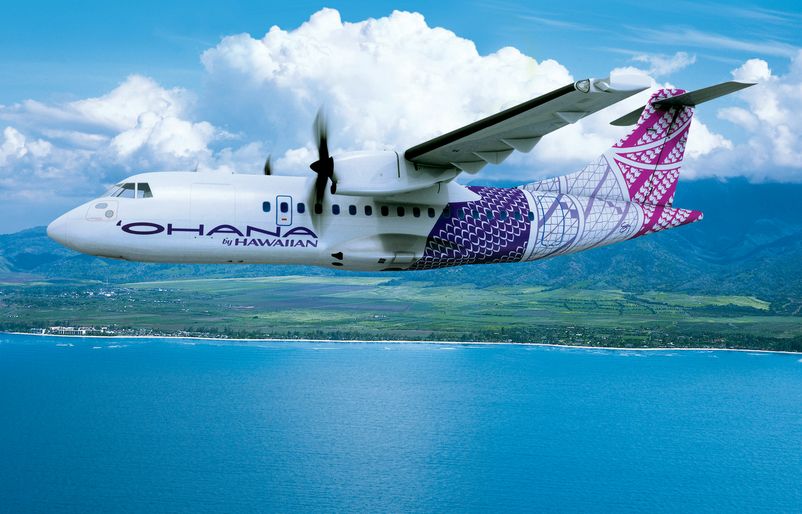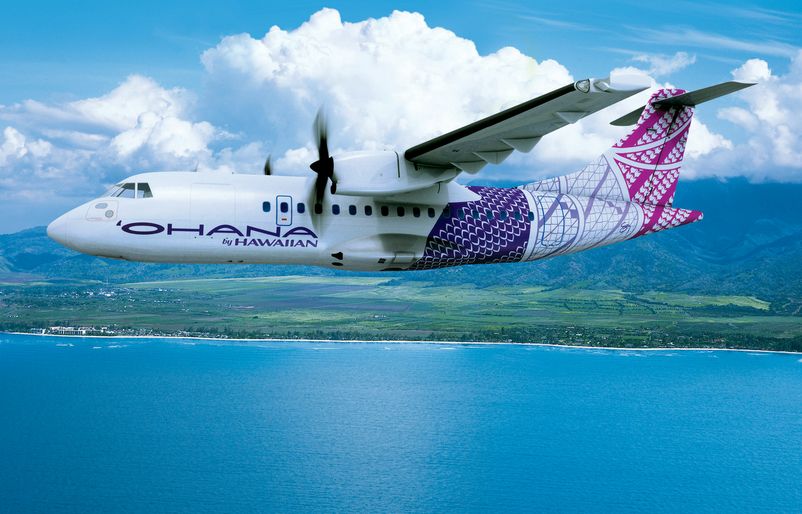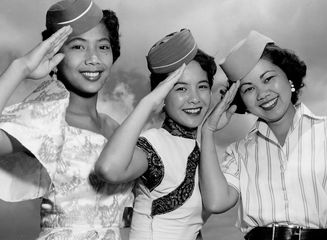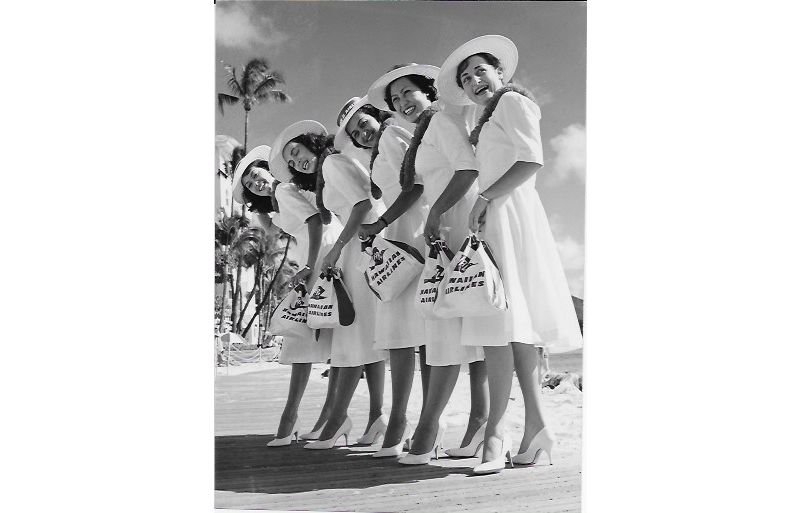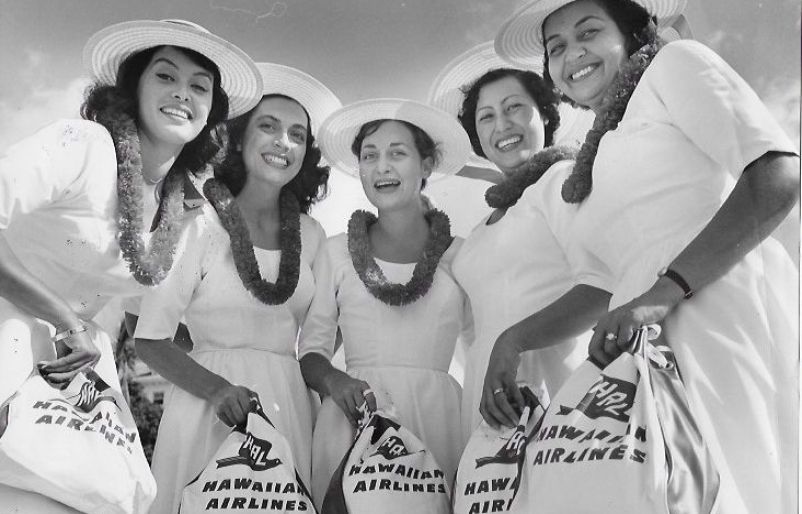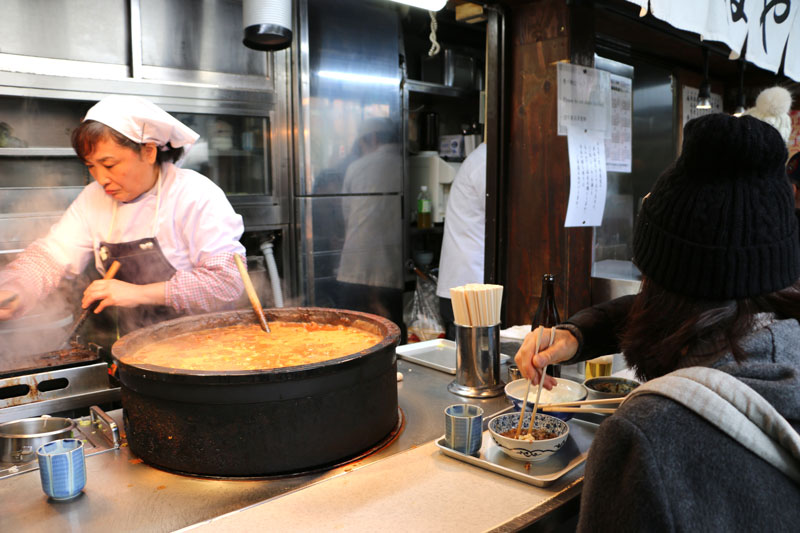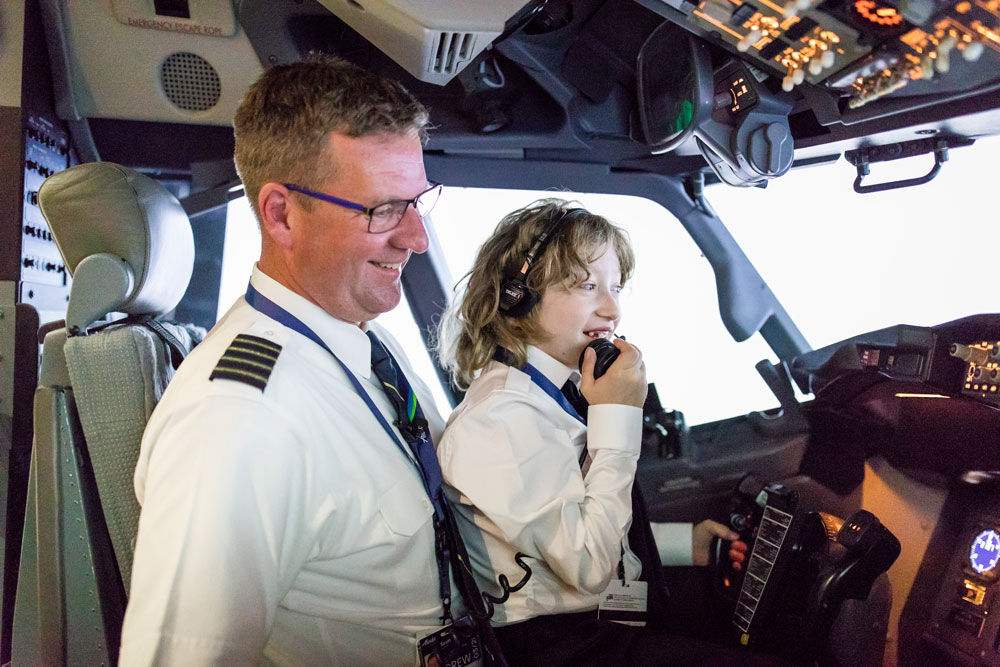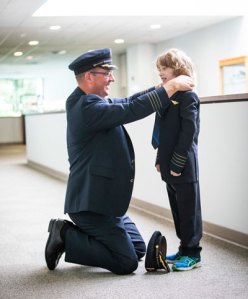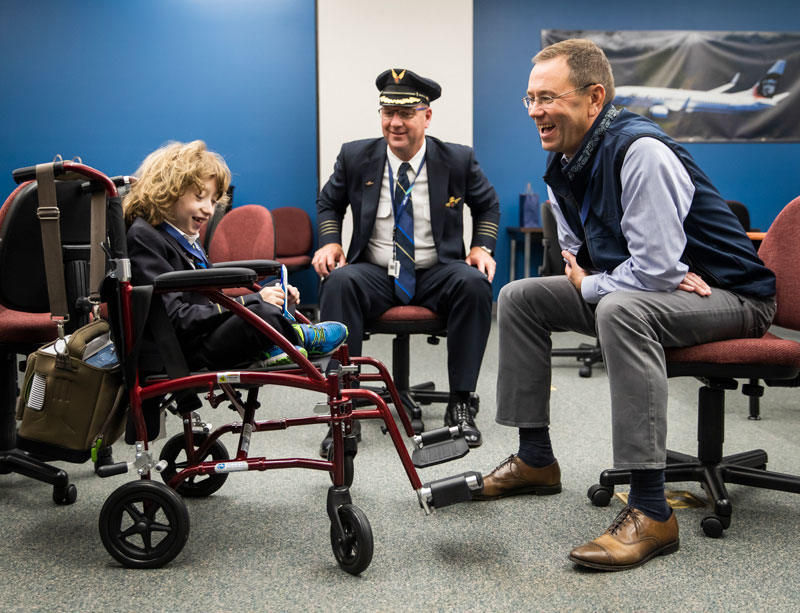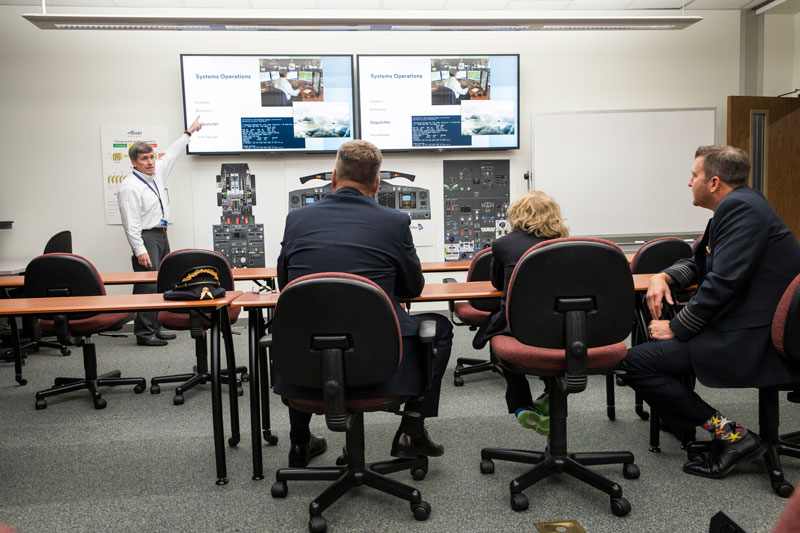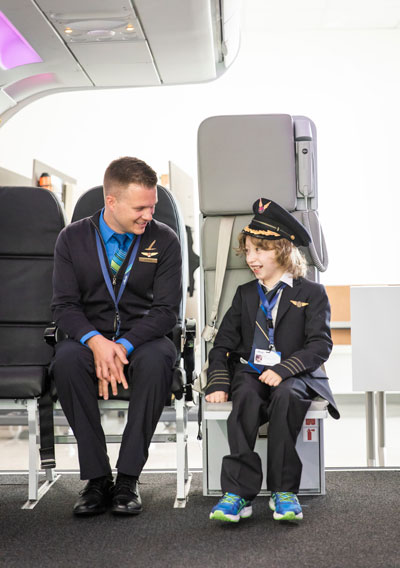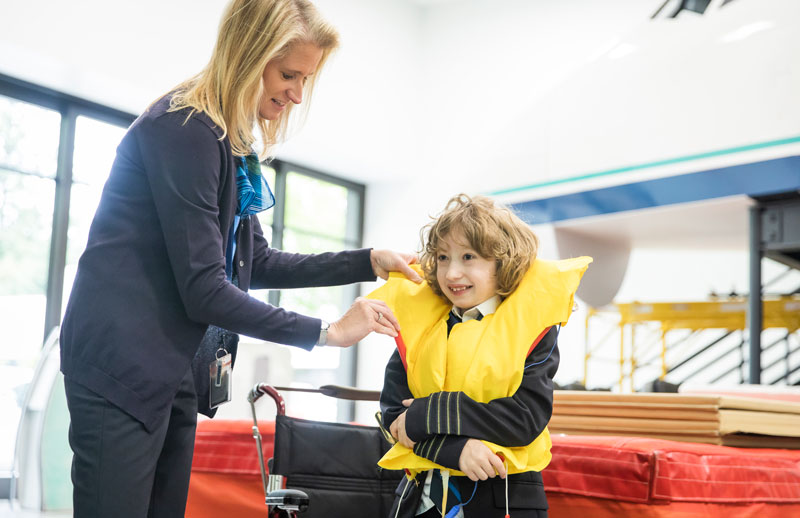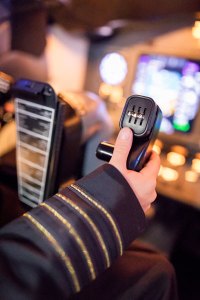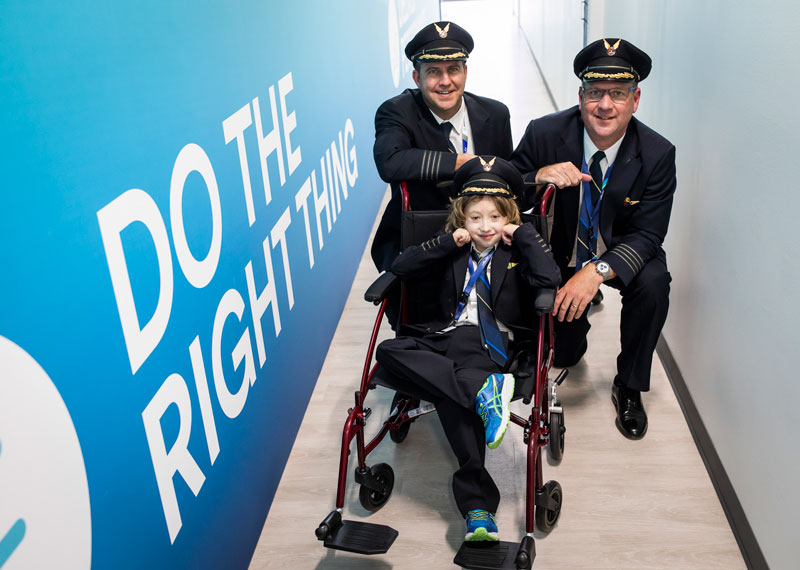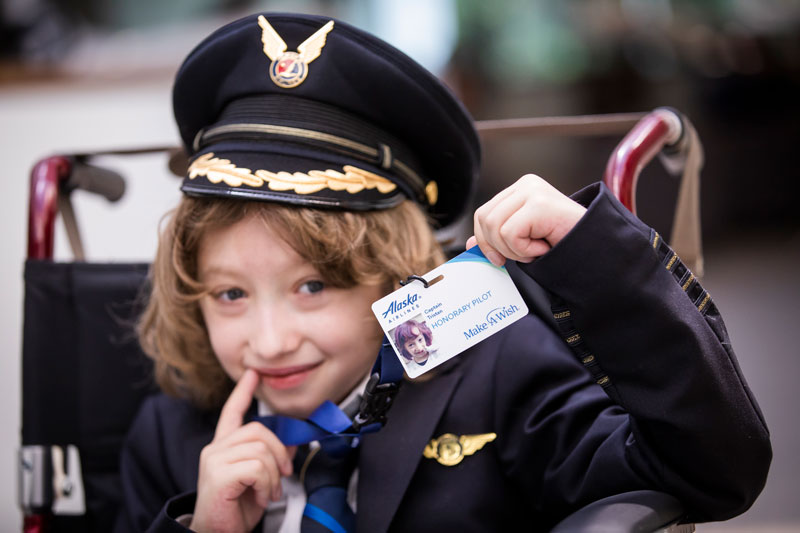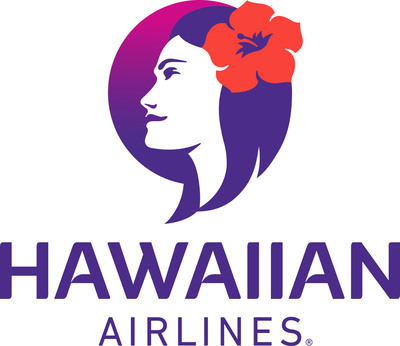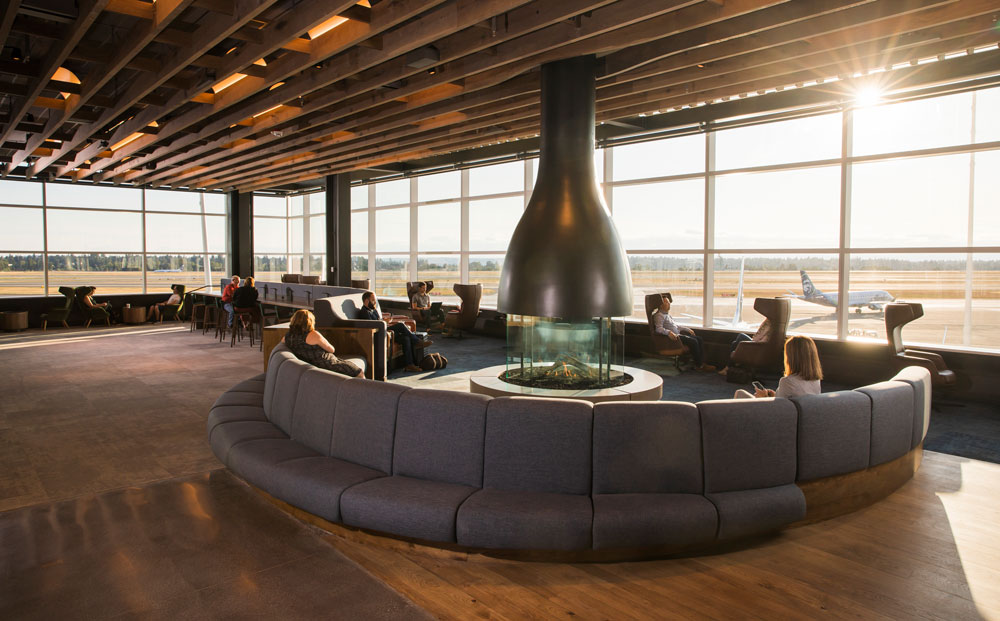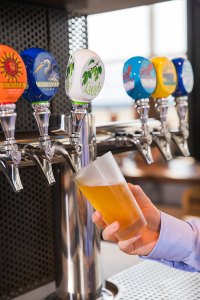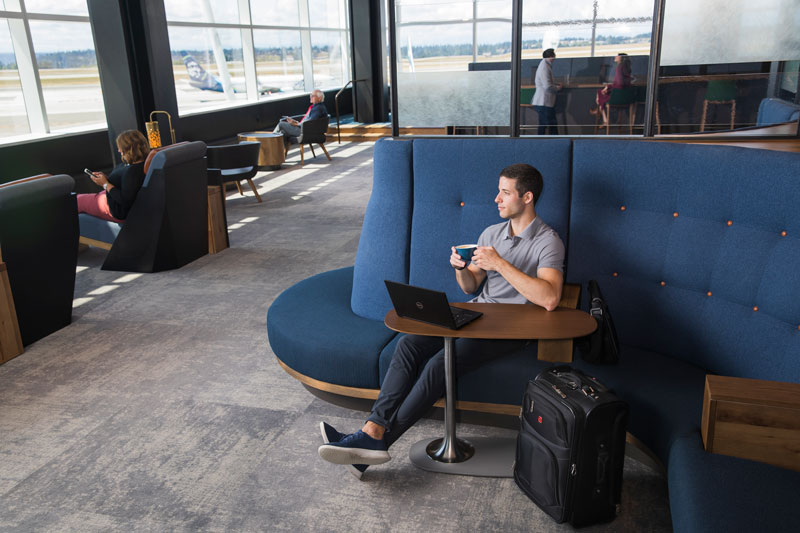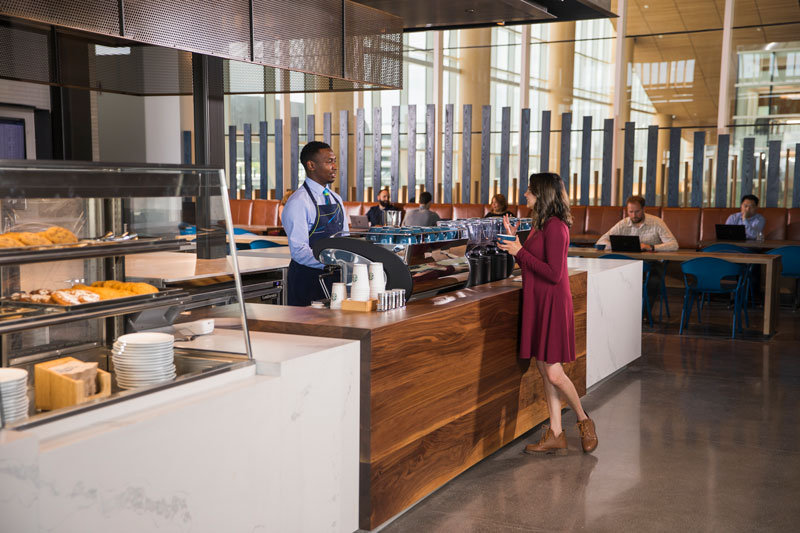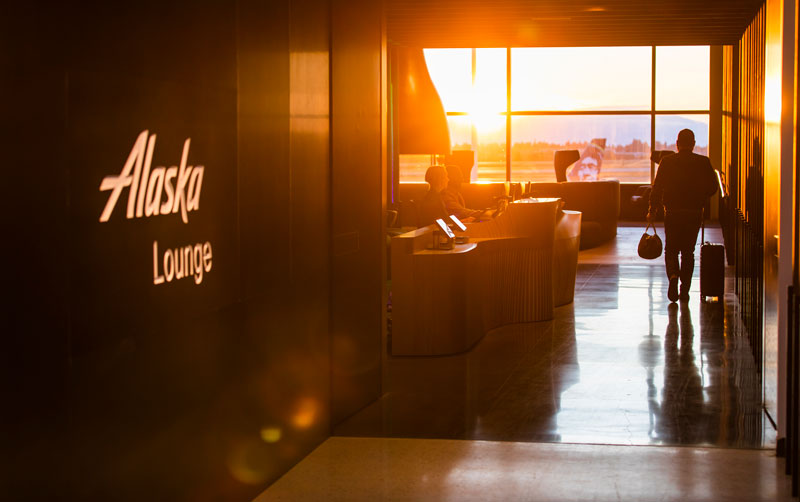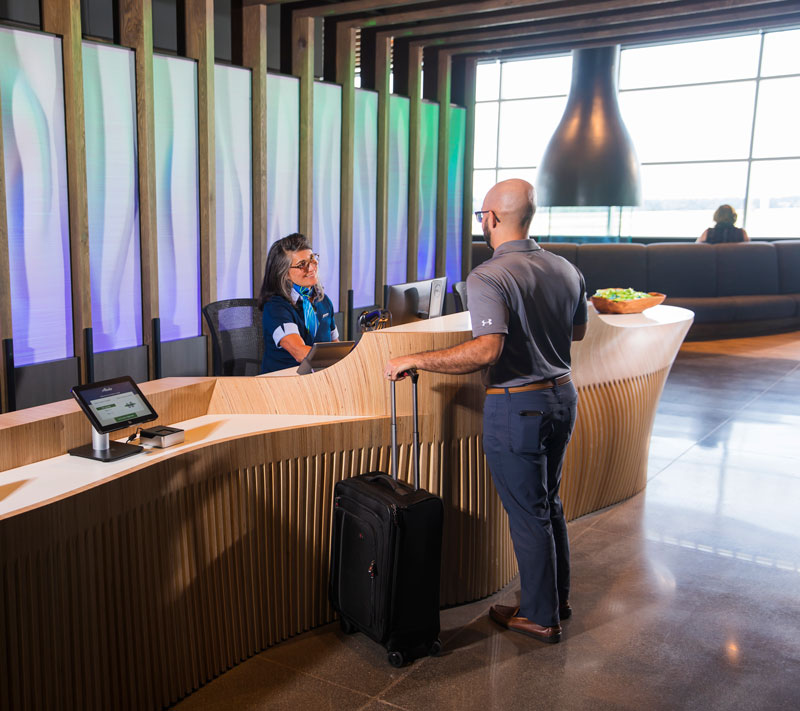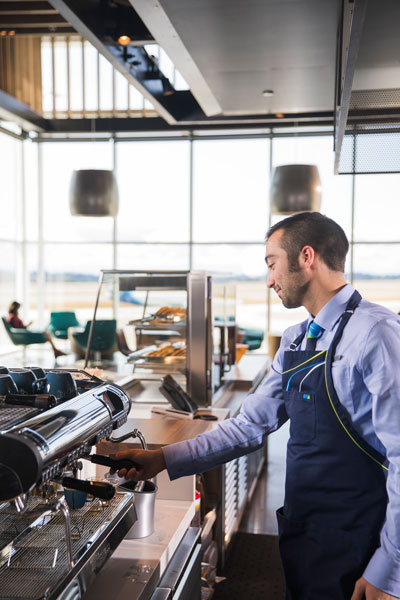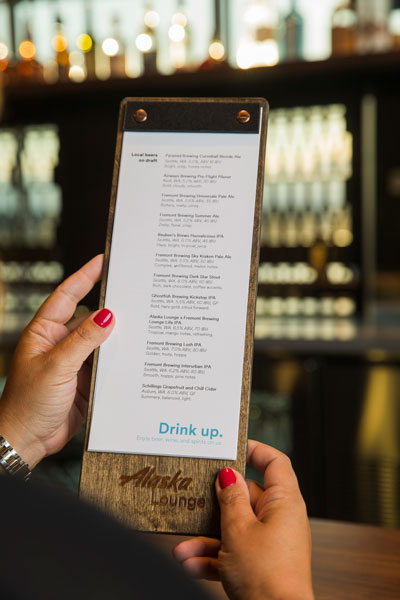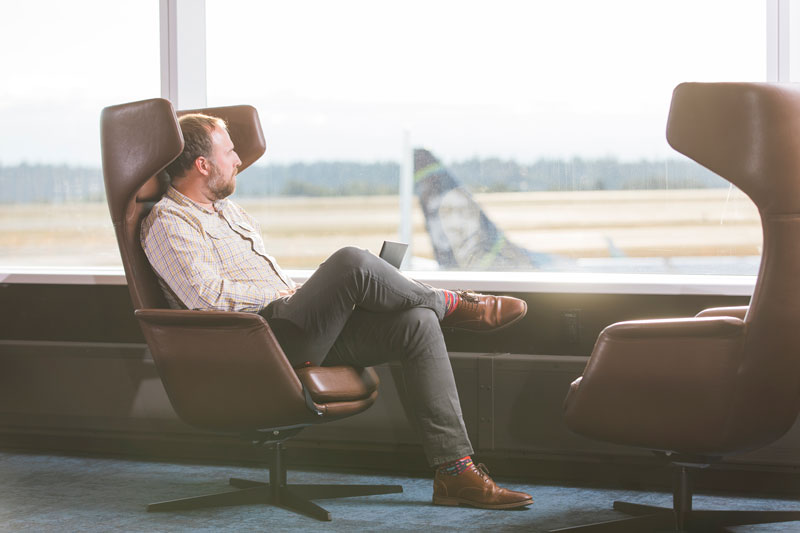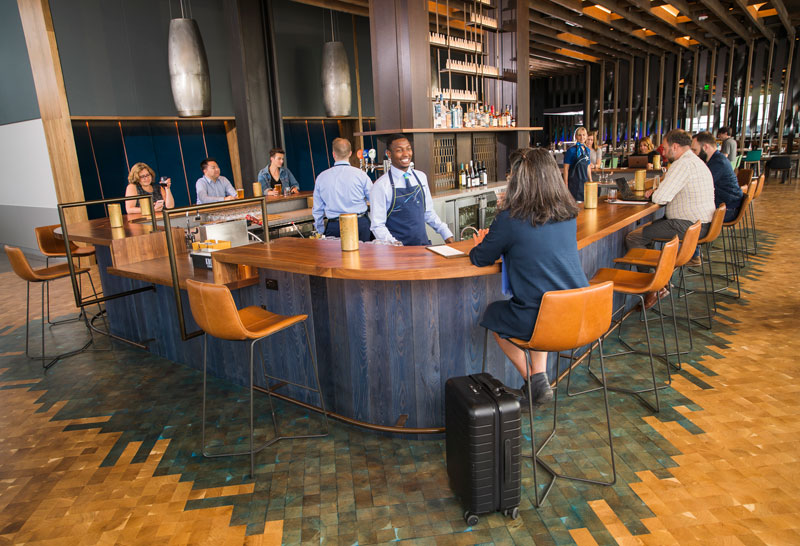
Hawaiian Holdings, Inc. (NASDAQ: HA) (the “Company”), parent company of Hawaiian Airlines, Inc. (“Hawaiian”), today reported its financial results for the second quarter of 2019.
|
Second Quarter 2019 – Key Financial Metrics
|
|
|
|
GAAP
|
|
YoY Change
|
|
Adjusted
|
|
YoY Change
|
|
Net Income
|
|
$57.8M
|
|
($21.6M)
|
|
$58.9M
|
|
($14.4M)
|
|
Diluted EPS
|
|
$1.21
|
|
($0.35)
|
|
$1.23
|
|
($0.21)
|
|
Pre-tax Margin
|
|
11.2%
|
|
(3.6) pts.
|
|
11.4%
|
|
(2.3) pts.
|
“We’re encouraged by another quarter of strong performance,” said Peter Ingram, Hawaiian Airlines president and CEO. “For the last year and a half, we’ve delivered consistently solid operational and financial results while facing heightened competitive pressures head on. I want to thank the entire Hawaiian ‘ohana for demonstrating day in and day out that no other airline is better suited to serve the needs of guests traveling to, from, and within the Hawaiian Islands than Hawaiian Airlines.”
Statistical information, as well as a reconciliation of the non-GAAP financial measures, can be found in the accompanying tables.
Shareholder Returns, Liquidity and Capital Resources
The Company returned $25.3 million to shareholders in the second quarter through share repurchases of $19.6 million and a dividend payment of $5.7 million.
On July 19, 2019, the Company's Board of Directors declared a quarterly cash dividend of 12 cents per share to be paid on August 30, 2019 to all shareholders of record as of August 16, 2019.
As of June 30, 2019, the Company had:
• Unrestricted cash, cash equivalents and short-term investments of $539 million
• Outstanding debt and finance lease obligations of $565 million
Second Quarter 2019 Highlights
Leadership and People
• Welcomed Justin Doane as Vice President of Labor Relations and David LeNoir Jr. as Vice President of Financial Planning and Analysis.
Operational
• Ranked #1 nationally for on-time performance year-to-date through May 2019 as reported in the U.S. Department of Transportation Air Travel Consumer Report, adding to its record of 15 consecutive years as the most punctual U.S. airline.
• Became the first U.S. airline to adopt the Pacelab Flight Profile Optimizer, a cutting-edge application by software provider PACE that enhances real-time aircraft and weather data to help determine the safest, most comfortable, and efficient flight routes while lowering annual fuel consumption and carbon emissions.
• Announced the expansion of its in-house pilot training capabilities with its planned purchase of a Boeing 787-9 flight simulator to prepare for the arrival of its new Dreamliner fleet beginning early 2021.
Customer Experience
• Debuted a newly designed lobby at Maui’s Kahului Airport (OGG), Hawai‘i’s second busiest airport, as part of its ongoing plans to improve the day-of travel experience for its guests. Similar lobby renovations are expected in 2019 at Kona International Airport (KOA), Hilo International Airport (ITO), and Lihue Airport (LIH).
Routes and Network
• Received a preliminary decision from the U.S. Department of Transportation for additional service from Tokyo Haneda Airport (HND) to Honolulu’s Daniel K. Inouye International Airport (HNL). The additional service, expected to begin in early 2020, will expand Hawaiian’s existing service between Tokyo and Hawai'i that consists of flights between Haneda (HND) and Honolulu (HNL) and Kona (KOA), and Tokyo Narita International Airport (NRT) and Honolulu (HNL).
• Continued its international expansion with the announcement of non-stop service between Fukuoka Airport (FUK) and Honolulu (HNL) beginning November 2019.
• Continued its domestic expansion with the launch of non-stop service between Sacramento International Airport (SMF) and Maui (OGG), and non-stop service between Boston's Logan International Airport (BOS) and Honolulu (HNL).
Fleet & Financing
• Took delivery of one Airbus A321neo aircraft in May, increasing the size of its A321neo fleet to thirteen aircraft.
• Retired its Boeing 717-200 Aircraft Facility with scheduled payments of approximately $45 million, increasing its unencumbered fleet to 37 aircraft.
• On July 1, 2019, Fitch Ratings affirmed Hawaiian’s and the Company’s corporate rating of BB- with Stable outlook.
Third Quarter and Full Year 2019 Outlook
The table below summarizes the Company’s expectations for the third quarter ending September 30, 2019, and the full year ending December 31, 2019, expressed as an expected percentage change compared to the results for the quarter ended September 30, 2018, and the full year ended December 31, 2018, as applicable.
For the full year ending December 31, 2019, the Company expects its effective tax rate to be in the range of 26% to 28%.
|
|
|
Third Quarter
|
|
|
|
GAAP Third Quarter
|
|
Item
|
|
2019 Guidance
|
|
GAAP Equivalent
|
|
2019 Guidance
|
|
ASMs
|
|
Down 1.5% – Up 0.5%
|
|
|
|
|
|
Operating revenue per ASM
|
|
Down 1.5 – 4.5%
|
|
|
|
|
|
Cost per ASM excluding fuel and non-recurring items (a)
|
|
Up 3.5 – 6.5%
|
|
Cost per ASM (a)
|
|
Down 0.5% – Up 1.7%
|
|
Gallons of jet fuel consumed
|
|
Down 2.5 – 4.5%
|
|
|
|
|
|
Economic fuel cost per gallon (b)(c)
|
|
$2.11
|
|
Fuel cost per gallon (b)
|
|
$2.07
|
|
|
|
Full Year
|
|
|
|
GAAP Full Year
|
|
Item
|
|
2019 Guidance
|
|
GAAP Equivalent
|
|
2019 Guidance
|
|
ASMs
|
|
Up 1.5 – 2.5%
|
|
|
|
|
|
Cost per ASM excluding fuel and non-recurring items (a)
|
|
Up 1.0 – 2.5%
|
|
Cost per ASM (a)
|
|
Down 2.1 – 3.2%
|
|
Gallons of jet fuel consumed
|
|
Down 1.0 – 2.0%
|
|
|
|
|
|
Economic fuel cost per gallon (b)(c)
|
|
$2.07
|
|
Fuel cost per gallon (b)
|
|
$2.03
|
(a) See Table 4 for a reconciliation of GAAP operating expenses to operating expenses excluding aircraft fuel and non-recurring items.
(b) Fuel cost per gallon estimates are based on the July 9, 2019 fuel forward curve.
(c) See Table 3 for a reconciliation of GAAP fuel costs to economic fuel costs.
Investor Conference Call
Hawaiian Holdings’ quarterly earnings conference call is scheduled to begin today (July 30, 2019) at 4:30 p.m. Eastern Time (USA). The conference call will be broadcast live over the Internet. Investors may access and listen to the live audio webcast on the investor relations section of the Company’s website at HawaiianAirlines.com. For those who are not available for the live webcast, a replay of the webcast will be archived for 90 days on the investor relations section of the Company's website.
About Hawaiian Airlines
Hawaiian® has led all U.S. carriers in on-time performance for each of the past 15 years (2004-2018) as reported by the U.S. Department of Transportation. Consumer surveys by Condé Nast Traveler, Travel + Leisure and TripAdvisor have placed Hawaiian among the top of all domestic airlines serving Hawai‘i.
Now in its 90th year of continuous service, Hawaiian is Hawai‘i’s biggest and longest-serving airline. Hawaiian offers non-stop service to Hawai‘i from more U.S. gateway cities (13) than any other airline, along with service from Japan, South Korea, Australia, New Zealand, American Samoa and Tahiti. Hawaiian also provides, on average, more than 170 jet flights daily between the Hawaiian Islands, with over 260 daily flights system-wide.
Hawaiian Airlines, Inc. is a subsidiary of Hawaiian Holdings, Inc. (NASDAQ: HA). Additional information is available at HawaiianAirlines.com. Follow Hawaiian's Twitter updates (@HawaiianAir), become a fan on Facebook (Hawaiian Airlines), and follow us on Instagram (hawaiianairlines). For career postings and updates, follow Hawaiian's LinkedIn page.
For media inquiries, please visit Hawaiian Airlines' online newsroom.
Forward-Looking Statements
This press release contains “forward-looking statements” within the meaning of the Private Securities Litigation Reform Act of 1995 that reflect the Company’s current views with respect to certain current and future events and financial performance. Such forward-looking statements include, without limitation, the Company’s expectations regarding available seat miles, cost per available seat mile, cost per available seat mile excluding fuel and non-recurring items, gallons of jet fuel consumed, fuel cost per gallon, and economic fuel cost per gallon for the quarter ending September 30, 2019 and full year ending December 31, 2019; the Company's expectations regarding operating revenue per available seat mile for the quarter ending September 30, 2019; the Company's expected tax rate for the year ending December 31, 2019; and statements as to other matters that do not relate strictly to historical facts or statements of assumptions underlying any of the foregoing. Words such as “expects,” “anticipates,” “projects,” “intends,” “plans,” “believes,” “estimates,” variations of such words, and similar expressions are also intended to identify such forward-looking statements. These forward-looking statements are and will be, as the case may be, subject to many risks, uncertainties and assumptions relating to the Company’s operations and business environment, all of which may cause the Company’s actual results to be materially different from any future results, expressed or implied, in these forward-looking statements. These risks and uncertainties include, without limitation, the Company’s ability to accurately forecast quarterly and annual results; economic volatility; macroeconomic developments; political developments; the price and availability of aircraft fuel; fluctuations in demand for transportation in the markets in which the Company operates, including due to the occurrence of natural disasters such as hurricanes, earthquakes and tsunamis; the Company’s dependence on tourist travel; labor negotiations and related developments; competitive pressures, including the impact of rising industry capacity between North America and Hawai‘i and interisland; the Company's ability to continue to generate sufficient cash flow to support the payment of a quarterly dividend; changes in the Company's future capital needs; foreign currency exchange rate fluctuations; and the Company’s ability to implement its growth strategy.
The risks, uncertainties and assumptions referred to above that could cause the Company’s results to differ materially from the results expressed or implied by such forward-looking statements also include the risks, uncertainties and assumptions discussed from time to time in the Company’s other public filings and public announcements, including the Company’s Annual Report on Form 10-K and the Company’s Quarterly Reports on Form 10-Q, as well as other documents that may be filed by the Company from time to time with the Securities and Exchange Commission. All forward-looking statements included in this document are based on information available to the Company on the date hereof. The Company does not undertake to publicly update or revise any forward-looking statements to reflect events or circumstances that may arise after the date hereof even if experience or future changes make it clear that any projected results expressed or implied herein will not be realized.
Table 1.
Hawaiian Holdings, Inc.
Consolidated Statements of Operations (unaudited)
|
|
|
Three Months Ended June 30,
|
|
Six Months Ended June 30,
|
|
|
|
2019
|
|
2018
|
|
% Change
|
|
2019
|
|
2018
|
|
% Change
|
|
|
|
(in thousands, except per share data)
|
|
Operating Revenue:
|
|
|
|
|
|
|
|
|
|
|
|
|
|
Passenger
|
|
$
|
653,423
|
|
|
$
|
655,162
|
|
|
(0.3
|
)%
|
|
$
|
1,254,727
|
|
|
$
|
1,266,762
|
|
|
(1.0
|
)%
|
|
Other
|
|
58,766
|
|
|
60,285
|
|
|
(2.5
|
)%
|
|
114,213
|
|
|
114,097
|
|
|
0.1
|
%
|
|
Total
|
|
712,189
|
|
|
715,447
|
|
|
(0.5
|
)%
|
|
1,368,940
|
|
|
1,380,859
|
|
|
(0.9
|
)%
|
|
Operating Expenses:
|
|
|
|
|
|
|
|
|
|
|
|
|
|
Wages and benefits
|
|
180,070
|
|
|
171,555
|
|
|
5.0
|
%
|
|
355,135
|
|
|
340,264
|
|
|
4.4
|
%
|
|
Aircraft fuel, including taxes and delivery
|
|
140,600
|
|
|
153,026
|
|
|
(8.1
|
)%
|
|
266,704
|
|
|
286,472
|
|
|
(6.9
|
)%
|
|
Maintenance, materials and repairs
|
|
58,131
|
|
|
60,970
|
|
|
(4.7
|
)%
|
|
121,176
|
|
|
119,111
|
|
|
1.7
|
%
|
|
Aircraft and passenger servicing
|
|
39,641
|
|
|
38,626
|
|
|
2.6
|
%
|
|
78,541
|
|
|
75,144
|
|
|
4.5
|
%
|
|
Depreciation and amortization
|
|
39,527
|
|
|
32,919
|
|
|
20.1
|
%
|
|
77,678
|
|
|
65,164
|
|
|
19.2
|
%
|
|
Commissions and other selling
|
|
32,471
|
|
|
31,853
|
|
|
1.9
|
%
|
|
63,307
|
|
|
63,778
|
|
|
(0.7
|
)%
|
|
Aircraft rent
|
|
30,843
|
|
|
29,865
|
|
|
3.3
|
%
|
|
61,239
|
|
|
61,765
|
|
|
(0.9
|
)%
|
|
Other rentals and landing fees
|
|
31,386
|
|
|
31,184
|
|
|
0.6
|
%
|
|
62,432
|
|
|
61,999
|
|
|
0.7
|
%
|
|
Purchased services
|
|
32,733
|
|
|
31,474
|
|
|
4.0
|
%
|
|
65,186
|
|
|
62,595
|
|
|
4.1
|
%
|
|
Contract terminations expense
|
|
—
|
|
|
—
|
|
|
—
|
%
|
|
—
|
|
|
35,322
|
|
|
(100.0
|
)%
|
|
Other
|
|
37,906
|
|
|
41,047
|
|
|
(7.7
|
)%
|
|
75,985
|
|
|
80,052
|
|
|
(5.1
|
)%
|
|
Total
|
|
623,308
|
|
|
622,519
|
|
|
0.1
|
%
|
|
1,227,383
|
|
|
1,251,666
|
|
|
(1.9
|
)%
|
|
Operating Income
|
|
88,881
|
|
|
92,928
|
|
|
(4.4
|
)%
|
|
141,557
|
|
|
129,193
|
|
|
9.6
|
%
|
|
Nonoperating Income (Expense):
|
|
|
|
|
|
|
|
|
|
|
|
|
|
Interest expense and amortization of debt discounts and issuance costs
|
|
(7,300
|
)
|
|
(7,627
|
)
|
|
|
|
(14,830
|
)
|
|
(16,182
|
)
|
|
|
|
Interest income
|
|
3,074
|
|
|
1,931
|
|
|
|
|
6,057
|
|
|
3,405
|
|
|
|
|
Capitalized interest
|
|
1,257
|
|
|
2,355
|
|
|
|
|
2,542
|
|
|
4,593
|
|
|
|
|
Gains (losses) on fuel derivatives
|
|
(3,220
|
)
|
|
18,952
|
|
|
|
|
(2,650
|
)
|
|
23,569
|
|
|
|
|
Other, net
|
|
(3,083
|
)
|
|
(2,752
|
)
|
|
|
|
(4,108
|
)
|
|
(1,696
|
)
|
|
|
|
Total
|
|
(9,272
|
)
|
|
12,859
|
|
|
|
|
(12,989
|
)
|
|
13,689
|
|
|
|
|
Income Before Income Taxes
|
|
79,609
|
|
|
105,787
|
|
|
|
|
128,568
|
|
|
142,882
|
|
|
|
|
Income tax expense
|
|
21,776
|
|
|
26,307
|
|
|
|
|
34,377
|
|
|
34,860
|
|
|
|
|
Net Income
|
|
$
|
57,833
|
|
|
$
|
79,480
|
|
|
|
|
$
|
94,191
|
|
|
$
|
108,022
|
|
|
|
|
Net Income Per Common Stock Share:
|
|
|
|
|
|
|
|
|
|
|
|
|
|
Basic
|
|
$
|
1.21
|
|
|
$
|
1.57
|
|
|
|
|
$
|
1.96
|
|
|
$
|
2.12
|
|
|
|
|
Diluted
|
|
$
|
1.21
|
|
|
$
|
1.56
|
|
|
|
|
$
|
1.96
|
|
|
$
|
2.12
|
|
|
|
|
Weighted Average Number of Common Stock Shares Outstanding:
|
|
|
|
|
|
|
|
|
|
|
|
|
|
Basic
|
|
47,854
|
|
|
50,776
|
|
|
|
|
48,122
|
|
|
50,915
|
|
|
|
|
Diluted
|
|
47,889
|
|
|
50,878
|
|
|
|
|
48,158
|
|
|
51,038
|
|
|
|
Table 2.
Hawaiian Holdings, Inc.
Selected Statistical Data (unaudited)
|
|
|
Three months ended June 30,
|
|
Six months ended June 30,
|
|
|
|
2019
|
|
2018
|
|
% Change
|
|
2019
|
|
2018
|
|
% Change
|
|
|
|
(in thousands, except as otherwise indicated)
|
|
Scheduled Operations (a) :
|
|
|
|
|
|
|
|
|
|
|
|
|
|
Revenue passengers flown
|
|
2,957
|
|
|
3,018
|
|
|
(2.0
|
)%
|
|
5,777
|
|
|
5,909
|
|
|
(2.2
|
)%
|
|
Revenue passenger miles (RPM)
|
|
4,487,362
|
|
|
4,333,125
|
|
|
3.6
|
%
|
|
8,615,090
|
|
|
8,363,783
|
|
|
3.0
|
%
|
|
Available seat miles (ASM)
|
|
5,153,025
|
|
|
5,019,962
|
|
|
2.7
|
%
|
|
10,003,748
|
|
|
9,751,275
|
|
|
2.6
|
%
|
|
Passenger revenue per RPM (Yield)
|
|
14.56
|
¢
|
|
15.12
|
¢
|
|
(3.7
|
)%
|
|
14.56
|
¢
|
|
15.15
|
¢
|
|
(3.9
|
)%
|
|
Passenger load factor (RPM/ASM)
|
|
87.1
|
%
|
|
86.3
|
%
|
|
0.8
|
pt.
|
|
86.1
|
%
|
|
85.8
|
%
|
|
0.3
|
pt.
|
|
Passenger revenue per ASM (PRASM)
|
|
12.68
|
¢
|
|
13.05
|
¢
|
|
(2.8
|
)%
|
|
12.54
|
¢
|
|
12.99
|
¢
|
|
(3.5
|
)%
|
|
Total Operations (a) :
|
|
|
|
|
|
|
|
|
|
|
|
|
|
Revenue passengers flown
|
|
2,959
|
|
|
3,018
|
|
|
(2.0
|
)%
|
|
5,781
|
|
|
5,910
|
|
|
(2.2
|
)%
|
|
Revenue passenger miles (RPM)
|
|
4,491,974
|
|
|
4,333,178
|
|
|
3.7
|
%
|
|
8,620,459
|
|
|
8,363,961
|
|
|
3.1
|
%
|
|
Available seat miles (ASM)
|
|
5,157,677
|
|
|
5,020,026
|
|
|
2.7
|
%
|
|
10,009,598
|
|
|
9,751,523
|
|
|
2.6
|
%
|
|
Operating revenue per ASM (RASM)
|
|
13.81
|
¢
|
|
14.25
|
¢
|
|
(3.1
|
)%
|
|
13.68
|
¢
|
|
14.16
|
¢
|
|
(3.4
|
)%
|
|
Operating cost per ASM (CASM)
|
|
12.09
|
¢
|
|
12.40
|
¢
|
|
(2.5
|
)%
|
|
12.26
|
¢
|
|
12.84
|
¢
|
|
(4.5
|
)%
|
|
CASM excluding aircraft fuel and non-recurring items (b)
|
|
9.38
|
¢
|
|
9.35
|
¢
|
|
0.3
|
%
|
|
9.62
|
¢
|
|
9.54
|
¢
|
|
0.8
|
%
|
|
Aircraft fuel expense per ASM (c)
|
|
2.73
|
¢
|
|
3.05
|
¢
|
|
(10.5
|
)%
|
|
2.66
|
¢
|
|
2.94
|
¢
|
|
(9.5
|
)%
|
|
Revenue block hours operated
|
|
54,840
|
|
|
51,477
|
|
|
6.5
|
%
|
|
106,466
|
|
|
100,223
|
|
|
6.2
|
%
|
|
Gallons of jet fuel consumed
|
|
67,277
|
|
|
68,627
|
|
|
(2.0
|
)%
|
|
131,798
|
|
|
133,906
|
|
|
(1.6
|
)%
|
|
Average cost per gallon of jet fuel (actual) (c)
|
|
$
|
2.09
|
|
|
$
|
2.23
|
|
|
(6.3
|
)%
|
|
$
|
2.02
|
|
|
$
|
2.14
|
|
|
(5.6
|
)%
|
|
Economic fuel cost per gallon (c)(d)
|
|
$
|
2.14
|
|
|
$
|
2.07
|
|
|
3.4
|
%
|
|
$
|
2.07
|
|
|
$
|
2.02
|
|
|
2.5
|
%
|
(a) Includes the operations of the Company's contract carrier under a capacity purchase agreement.
(b) See Table 4 for a reconciliation of GAAP operating expenses to operating expenses excluding aircraft fuel and non-recurring items.
(c) Includes applicable taxes and fees.
(d) See Table 3 for a reconciliation of GAAP fuel costs to economic fuel costs.
Table 3.
Hawaiian Holdings, Inc.
Economic Fuel Expense (unaudited)
The Company believes that economic fuel expense is a good measure of the effect of fuel prices on its business as it most closely approximates the net cash outflow associated with the purchase of fuel for its operations in a period. The Company defines economic fuel expense as GAAP fuel expense plus losses/(gains) realized through actual cash (receipts)/payments received from or paid to hedge counterparties for fuel hedge derivative contracts settled during the period.
|
|
|
Three months ended June 30,
|
|
Six months ended June 30,
|
|
|
|
2019
|
|
2018
|
|
% Change
|
|
2019
|
|
2018
|
|
% Change
|
|
|
|
(in thousands, except per-gallon amounts)
|
|
Aircraft fuel expense, including taxes and delivery
|
|
$
|
140,600
|
|
|
$
|
153,026
|
|
|
(8.1
|
)%
|
|
$
|
266,704
|
|
|
$
|
286,472
|
|
|
(6.9
|
)%
|
|
Realized losses (gains) on settlement of fuel derivative contracts
|
|
3,051
|
|
|
(10,827
|
)
|
|
NM
|
|
5,895
|
|
|
(16,488
|
)
|
|
NM
|
|
Economic fuel expense
|
|
$
|
143,651
|
|
|
$
|
142,199
|
|
|
1.0
|
%
|
|
$
|
272,599
|
|
|
$
|
269,984
|
|
|
1.0
|
%
|
|
Fuel gallons consumed
|
|
67,277
|
|
|
68,627
|
|
|
(2.0
|
)%
|
|
131,798
|
|
|
133,906
|
|
|
(1.6
|
)%
|
|
Economic fuel costs per gallon
|
|
$
|
2.14
|
|
|
$
|
2.07
|
|
|
3.4
|
%
|
|
$
|
2.07
|
|
|
$
|
2.02
|
|
|
2.5
|
%
|
|
|
|
Estimated three months ending
September 30, 2019
|
|
Estimated full year ending
December 31, 2019
|
|
|
|
(in thousands, except per-gallon amounts)
|
|
Aircraft fuel expense, including taxes and delivery
|
|
$
|
142,552
|
|
to
|
$
|
145,596
|
|
|
$
|
544,996
|
|
to
|
$
|
550,664
|
|
|
Realized losses (gains) on settlement of fuel derivative contracts
|
|
2,800
|
|
to
|
2,800
|
|
|
10,400
|
|
to
|
10,400
|
|
|
Economic fuel expense
|
|
$
|
145,352
|
|
to
|
$
|
148,396
|
|
|
$
|
555,396
|
|
to
|
$
|
561,064
|
|
|
Fuel gallons consumed
|
|
68,887
|
|
to
|
70,330
|
|
|
268,307
|
|
to
|
271,045
|
|
|
Economic fuel costs per gallon
|
|
$
|
2.11
|
|
to
|
$
|
2.11
|
|
|
$
|
2.07
|
|
to
|
$
|
2.07
|
|
Table 4.
Hawaiian Holdings, Inc.
Non-GAAP Financial Reconciliation (unaudited)
The Company evaluates its financial performance utilizing various GAAP and non-GAAP financial measures, including net income, diluted net income per share, CASM, PRASM, RASM, Passenger Revenue per RPM and EBITDAR. Pursuant to Regulation G, the Company has included the following reconciliation of reported non-GAAP financial measures to comparable financial measures reported on a GAAP basis. The adjustments are described below:
• Changes in fair value of derivative contracts, net of tax, are based on market prices for open contracts as of the end of the reporting period. This line item includes the unrealized amounts of fuel derivatives (not designated as hedges) that will settle in future periods and the reversal of prior period unrealized amounts.
• Unrealized loss (gain) on foreign debt is based on fluctuations in foreign exchange rates related to foreign-denominated debt agreements the Company executed during the three months ended June 30, 2018.
• During the three and six months ended June 30, 2019, the Company recorded a gain on disposal of Boeing 767-300 aircraft equipment of $0.9 million and $1.9 million, respectively, in conjunction with the retirement of its Boeing 767-300 fleet.
The Company believes that excluding the impact of these derivative adjustments, fluctuations in foreign exchange rates, and the sale of aircraft and aircraft equipment helps investors better analyze the Company's operational performance and compare its results to other airlines in the periods presented.
2018 contract terminations expense
• During the six months ended June 30, 2018, the Company terminated two contracts which resulted in a $35.3 million contract terminations expense. In February 2018, the Company exercised its right to terminate its purchase agreement with Airbus for six Airbus A330-800neo aircraft and the purchase rights for an additional six Airbus A330-800neo aircraft. The Company recorded a contract terminations expense to reflect a portion of the termination penalty. In January 2018, the Company entered into a transaction with its lessor to early terminate and purchase three Boeing 767-300 aircraft leases and concurrently entered into a forward sale agreement for the same three Boeing 767-300 aircraft, including two Pratt & Whitney 4060 engines for each aircraft. These aircraft were previously accounted for as operating leases. In order to exit the leases and purchase the aircraft, the Company agreed to pay a total of $67.1 million (net of all deposits) of which a portion was expensed immediately and recognized as a lease termination fee. The expensed amount represents the total purchase price over fair value of the aircraft purchased as of the date of the transaction.
|
|
|
Three months ended June 30,
|
|
Six months ended June 30,
|
|
|
|
2019
|
|
2018
|
|
2019
|
|
2018
|
|
|
|
Total
|
|
Diluted Per Share
|
|
Total
|
|
Diluted Per Share
|
|
Total
|
|
Diluted Per Share
|
|
Total
|
|
Diluted Per Share
|
|
|
|
(in thousands, except per share data)
|
|
GAAP Net Income, as reported
|
|
$
|
57,833
|
|
|
$
|
1.21
|
|
|
$
|
79,480
|
|
|
$
|
1.56
|
|
|
$
|
94,191
|
|
|
$
|
1.96
|
|
|
$
|
108,022
|
|
|
$
|
2.12
|
|
|
Add (deduct): changes in fair value of derivative contracts
|
|
169
|
|
|
0.00
|
|
(8,125
|
)
|
|
(0.16
|
)
|
|
(3,245
|
)
|
|
(0.07
|
)
|
|
(7,081
|
)
|
|
(0.14
|
)
|
|
Add: unrealized loss (gain) on foreign debt
|
|
2,167
|
|
|
0.05
|
|
|
(64
|
)
|
|
(0.00)
|
|
1,537
|
|
|
0.03
|
|
|
(64
|
)
|
|
(0.00)
|
|
Add: loss (gain) on sale of aircraft and equipment
|
|
(851
|
)
|
|
(0.02
|
)
|
|
—
|
|
|
—
|
|
|
(1,948
|
)
|
|
(0.04
|
)
|
|
—
|
|
|
—
|
|
|
Add: contract terminations expense
|
|
—
|
|
|
—
|
|
|
—
|
|
|
—
|
|
|
—
|
|
|
—
|
|
|
35,322
|
|
|
0.69
|
|
|
Deduct: tax effect of adjustments
|
|
(386
|
)
|
|
(0.01
|
)
|
|
2,047
|
|
|
0.04
|
|
|
951
|
|
|
0.02
|
|
|
(7,045
|
)
|
|
(0.14
|
)
|
|
Adjusted Net Income
|
|
$
|
58,932
|
|
|
$
|
1.23
|
|
|
$
|
73,338
|
|
|
$
|
1.44
|
|
|
$
|
91,486
|
|
|
$
|
1.90
|
|
|
$
|
129,154
|
|
|
$
|
2.53
|
|
|
|
|
Three months ended June 30,
|
|
Six months ended June 30,
|
|
|
|
2019
|
|
2018
|
|
2019
|
|
2018
|
|
|
|
(in thousands)
|
|
Income Before Income Taxes, as reported
|
|
$
|
79,609
|
|
|
$
|
105,787
|
|
|
$
|
128,568
|
|
|
$
|
142,882
|
|
|
Add (deduct): changes in fair value of derivative contracts
|
|
169
|
|
|
(8,125
|
)
|
|
(3,245
|
)
|
|
(7,081
|
)
|
|
Add: unrealized loss (gain) on foreign debt
|
|
2,167
|
|
|
(64
|
)
|
|
1,537
|
|
|
(64
|
)
|
|
Add: loss (gain) on sale of aircraft and equipment
|
|
(851
|
)
|
|
—
|
|
|
(1,948
|
)
|
|
—
|
|
|
Add: contract terminations expense
|
|
—
|
|
|
—
|
|
|
—
|
|
|
35,322
|
|
|
Adjusted Income Before Income Taxes
|
|
$
|
81,094
|
|
|
$
|
97,598
|
|
|
$
|
124,912
|
|
|
$
|
171,059
|
|
Operating Costs per Available Seat Mile (CASM)
The Company has separately listed in the table below its fuel costs per ASM and non-GAAP unit costs, excluding fuel and non-recurring items. These amounts are included in CASM, but for internal purposes the Company consistently uses cost metrics that exclude fuel and non-recurring items (if applicable) to measure and monitor its costs.
|
|
|
Three months ended June 30,
|
|
Six months ended June 30,
|
|
|
|
2019
|
|
2018
|
|
2019
|
|
2018
|
|
|
|
(in thousands, except CASM data)
|
|
GAAP Operating Expenses
|
|
$
|
623,308
|
|
|
$
|
622,519
|
|
|
$
|
1,227,383
|
|
|
$
|
1,251,666
|
|
|
Less: aircraft fuel, including taxes and delivery
|
|
(140,600
|
)
|
|
(153,026
|
)
|
|
(266,704
|
)
|
|
(286,472
|
)
|
|
Less: (loss) gain on sale of aircraft and equipment
|
|
851
|
|
|
—
|
|
|
1,948
|
|
|
—
|
|
|
Less: contract terminations expense
|
|
—
|
|
|
—
|
|
|
—
|
|
|
(35,322
|
)
|
|
Adjusted Operating Expenses
|
|
$
|
483,559
|
|
|
$
|
469,493
|
|
|
$
|
962,627
|
|
|
$
|
929,872
|
|
|
Available Seat Miles
|
|
5,157,677
|
|
|
5,020,026
|
|
|
10,009,598
|
|
|
9,751,523
|
|
|
CASM – GAAP
|
|
12.09
|
¢
|
|
12.40
|
¢
|
|
12.26
|
¢
|
|
12.84
|
¢
|
|
Less: aircraft fuel
|
|
(2.73
|
)
|
|
(3.05
|
)
|
|
(2.66
|
)
|
|
(2.94
|
)
|
|
Less: (loss) gain on sale of aircraft and equipment
|
|
0.02
|
|
|
—
|
|
|
0.02
|
|
|
—
|
|
|
Less: contract terminations expense
|
|
—
|
|
|
—
|
|
|
—
|
|
|
(0.36
|
)
|
|
Adjusted CASM
|
|
9.38
|
¢
|
|
9.35
|
¢
|
|
9.62
|
¢
|
|
9.54
|
¢
|
|
|
|
Estimated three months ending
September 30, 2019
|
|
Estimated full year ending
December 31, 2019
|
|
|
|
(in thousands, except CASM data)
|
|
GAAP Operating Expenses
|
|
$
|
630,427
|
|
to
|
$
|
657,806
|
|
|
$
|
2,478,624
|
|
to
|
$
|
2,532,391
|
|
|
Less: aircraft fuel, including taxes and delivery
|
|
(142,552
|
)
|
to
|
(145,596
|
)
|
|
(544,996
|
)
|
to
|
(550,664
|
)
|
|
Less: (loss) gain on sale of aircraft and equipment
|
|
—
|
|
to
|
—
|
|
|
1,948
|
|
to
|
1,948
|
|
|
Adjusted Operating Expenses
|
|
$
|
487,875
|
|
to
|
$
|
512,210
|
|
|
$
|
1,935,576
|
|
to
|
$
|
1,983,675
|
|
|
Available Seat Miles
|
|
5,272,681
|
|
to
|
5,379,741
|
|
|
20,474,490
|
|
to
|
20,676,209
|
|
|
CASM – GAAP
|
|
11.96
|
¢
|
to
|
12.23
|
¢
|
|
12.11
|
¢
|
to
|
12.25
|
¢
|
|
Less: aircraft fuel
|
|
(2.70
|
)
|
to
|
(2.71
|
)
|
|
(2.66
|
)
|
to
|
(2.66
|
)
|
|
Less: (loss) gain on sale of aircraft and equipment
|
|
—
|
|
to
|
—
|
|
|
0.01
|
|
to
|
0.01
|
|
|
Adjusted CASM
|
|
9.25
|
¢
|
to
|
9.52
|
¢
|
|
9.45
|
¢
|
to
|
9.59
|
¢
|
Pre-tax margin
The Company excludes unrealized gains from fuel derivative contracts, losses on extinguishment of debt, and non-recurring items from pre-tax margin for the same reasons as described above.
|
|
|
Three months ended June 30,
|
|
Six months ended June 30,
|
|
|
|
2019
|
|
2018
|
|
2019
|
|
2018
|
|
Pre-Tax Margin, as reported
|
|
11.2
|
%
|
|
14.8
|
%
|
|
9.4
|
%
|
|
10.3
|
%
|
|
Add: changes in fair value of derivative contracts
|
|
0.0
|
|
(1.1
|
)
|
|
(0.2
|
)
|
|
(0.5
|
)
|
|
Add: unrealized loss (gain) on foreign debt
|
|
0.3
|
|
|
0.0
|
|
0.1
|
|
|
0.0
|
|
Add: loss (gain) on sale of aircraft and equipment
|
|
(0.1
|
)
|
|
—
|
|
|
(0.1
|
)
|
|
—
|
|
|
Add: contract terminations expense
|
|
—
|
|
|
—
|
|
|
—
|
|
|
2.6
|
|
|
Adjusted Pre-Tax Margin
|
|
11.4
|
%
|
|
13.7
|
%
|
|
9.2
|
%
|
|
12.4
|
%
|
Leverage ratio
The Company uses adjusted total debt, including aircraft rent, in addition to long-term adjusted debt and finance leases, to represent long-term financial obligations. The Company excludes unrealized (gains) losses from fuel derivative contracts, losses on extinguishment of debt, and non-recurring items from earnings before interest, taxes, depreciation, amortization and rent (EBITDAR) for the reasons described above. Management believes this metric is helpful to investors in assessing the Company’s overall debt.
|
|
|
Twelve months ended
|
|
|
|
June 30, 2019
|
|
|
|
(in thousands, except Leverage Ratio)
|
|
Debt and finance lease obligations
|
|
$
|
565,283
|
|
|
Plus: Aircraft leases capitalized at 7x last twelve months' aircraft rent
|
|
878,045
|
|
|
Adjusted debt and finance lease obligations
|
|
$
|
1,443,328
|
|
|
|
|
|
|
EBITDAR:
|
|
|
|
Income Before Income Taxes
|
|
$
|
286,844
|
|
|
Add back:
|
|
|
|
Interest and amortization of debt discounts and issuance costs
|
|
31,649
|
|
|
Depreciation and amortization
|
|
152,380
|
|
|
Aircraft rent
|
|
125,435
|
|
|
EBITDAR
|
|
$
|
596,308
|
|
|
|
|
|
|
Adjustments:
|
|
|
|
Add: changes in fair value of derivative contracts
|
|
$
|
23,809
|
|
|
Add: unrealized loss (gain) on foreign debt
|
|
1,981
|
|
|
Add: loss (gain) on sale of aircraft and equipment
|
|
(1,639
|
)
|
|
Adjusted EBITDAR
|
|
$
|
620,459
|
|
|
|
|
|
|
Leverage Ratio
|
|
2.3
|
x
|
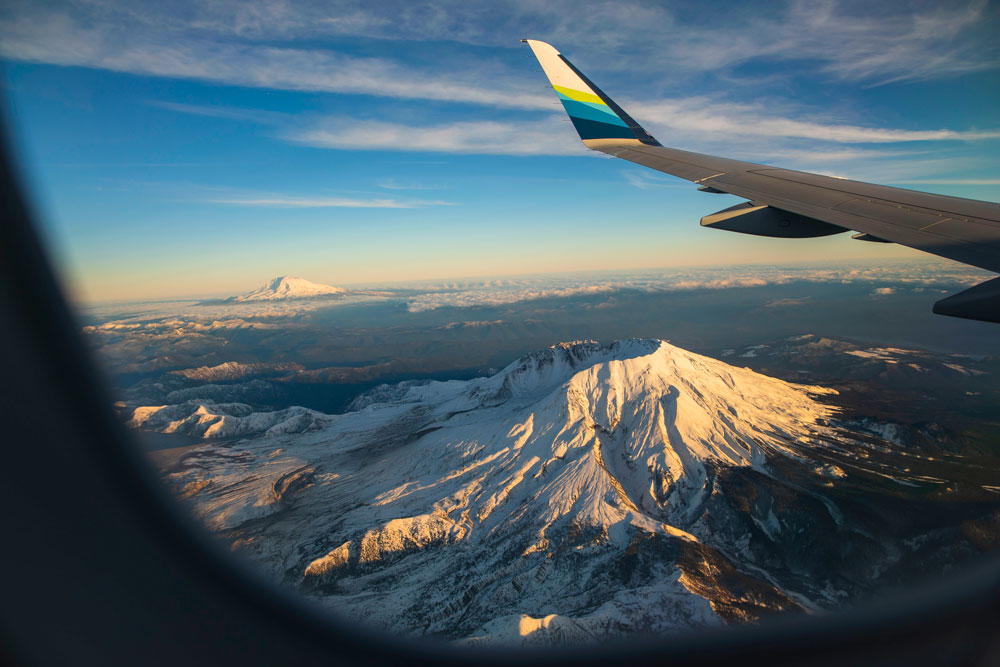
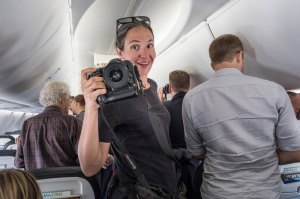
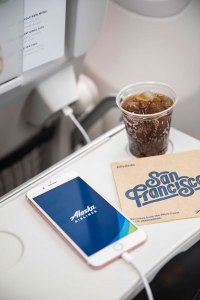 Do you own a professional camera or do you make images with your phone? You can capture good photos with both! The key is to plan ahead.
Do you own a professional camera or do you make images with your phone? You can capture good photos with both! The key is to plan ahead.